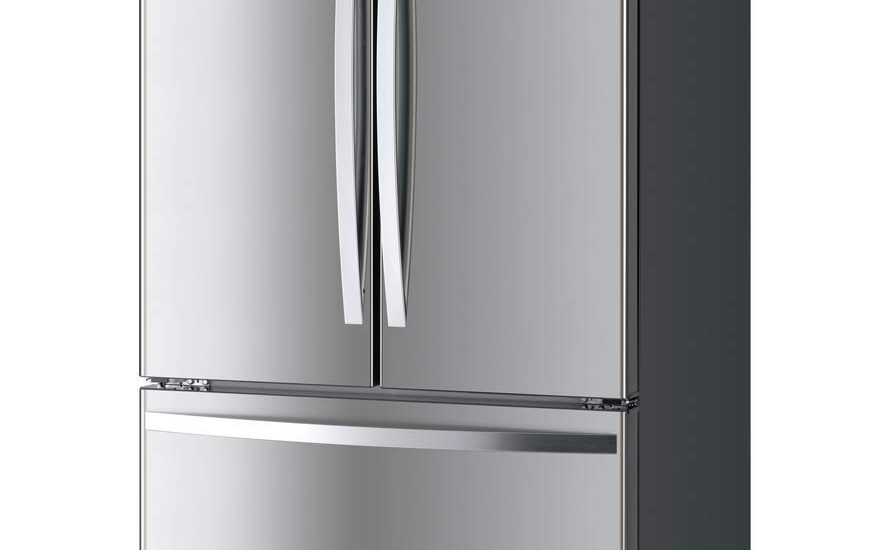If a Kenmore refrigerator tripping breaker, it is a problem that must be fixed as quickly as possible. Let us explain how.

Table of Contents
Why Is My Kenmore Refrigerator Tripping Breaker
If your Kenmore refrigerator is tripping the breaker, following are the likely issues…
1. Faulty Compressor Relay
This is the most likely refrigerator fault that causes a breaker to trip. The reason is that it needs a significant quantity of electricity to function.
If a refrigerator’s compressor trips the breaker when it tries to start after a break, it has a grounding problem that results in an overload of electricity.
Another way of confirming if the compressor is the source of the problem is to disconnect the refrigerator from power. Disconnect all electrical wires connected to the compressor and reconnect the refrigerator. If the breaker doesn’t trip, the compressor has an issue.
To fix this, use a multimeter to test the compressor for continuity. If you find none, replace the compressor.
2. Faulty Defrost Heater
Another possible cause of a tripping breaker is a faulty defrost heater. To confirm if the defrost heater is the cause of the circuit breaker trips, you may have to leave the freezer door open and test the connections to the defrost heater with an ohmmeter.
Most times, defrost heater issues are misinterpreted to be a fault from the compressor because of the way they function.
You can determine which is faulty by observing the compressor. When it comes on for a cooling cycle, see if the breaker trips.
If the defrost heater is the cause, the tripping won’t occur as often as it would have if the problem is the compressor. The defrost heater turns on every 20 to 45 minutes and doesn’t make a humming sound like the compressor.
3. Faulty Fan
The fan can cause a tripping breaker if it is becomes clogged with dirt or debris. The dirt or debris will impact the way the fan functions and trigger it to require more electric power to function and consequently overload itself.
To fix this, first examine the fan and clean off any dirt or debris stuck on it. If this doesn’t solve this problem, you may need to test the fan with a multimeter. If you find no continuity on any of its components, replace the component or the entire fan assembly.
4. Weak Electric Wires
You will typically find weak wires in old houses where the wires have worn out with time and the wire plastic coverings are falling off. It exposes the wires and when two incompatible wires make contact, they overload appliances, including the refrigerator.
Have an electrician check the wiring and replace any faulty one.
5. Faulty Thermostat
The thermostat uses an insignificant amount of power to function so may not be the reason for the tripping breaker. It’s best to test the thermostat after you have confirmed the other suspected faulty parts are in good working condition.
Test the thermostat with a multimeter for continuity. And if you find none, it’s best to replace it.
Check out these other articles…
Kenmore Fridge Filter [Issues & Solutions]
LG Refrigerator WiFi [Issues And Solutions]
Kenmore Refrigerator Modes [Detailed Guide]
Refrigerator Compressor Is Hot [Solutions]
Refrigerator Compressor Running Problems [Solved]
Kenmore Refrigerator Tripping GFCI – Solved
If your Kenmore refrigerator trips the GFCI, these could be the possible causes:
1. Faulty Defrost Heater or Ice Maker
Kenmore refrigerators with faulty defrost heaters or ice makers will cause your GFCI to trip often. It is advised that you fix any of these faults on your refrigerator or deactivate them in order to prevent the trips.
Another option is to use an outlet that has no GFCI.
2. Minor Trips
Trips happen often when your refrigerator comes with vapor compression. The trips are triggered when an inductive load goes off and produces electromagnetic interference (EMI).
To reduce such minor trips, you may install snubbers between the Kenmore refrigerator and the GFCI to lessen the voltage transients. If you are averse to disconnect the refrigerator from the GFCI, you may replace the circuit breaker, which directs power from the circuit box to your refrigerator, with a GFCI breaker.
3. Ground Defects
If your refrigerator is very old and has worn-out wires, it may trigger electric shocks when it comes in contact with the ground on which the device is mounted. The result is that electric current will travel through any electric conductor that also comes in contact with the same ground.
If your refrigerator is connected to a GFCI, it quickly trips off once it senses such potential electric danger.
To fix this, it’s not advisable to disconnect the GFCI from your refrigerator when it is in such a condition. It’s better to replace the damaged wire(s) or replace the refrigerator.
4. Faulty Defrost Timer
If your refrigerator has a freezer and also trips the GFCI, it could be as a result of a faulty defrost timer. The best way to fix this is to replace the defrost timer.
Important Notes
For the dismantling of any electrical component(s) of the refrigerator, disconnect the refrigerator from the power source.
Always replace any damaged Kenmore refrigerator part with the right replacement part.
Contact Kenmore for further assistance if none of the fixes above works for your refrigerator.
Get Instant Help — Ask An Experienced Verified Appliance Technician
Need expert help? Click here to use the chat box on this page to speak with a verified appliance technician right away. No need for expensive in-home service calls. No appointments. No waiting.